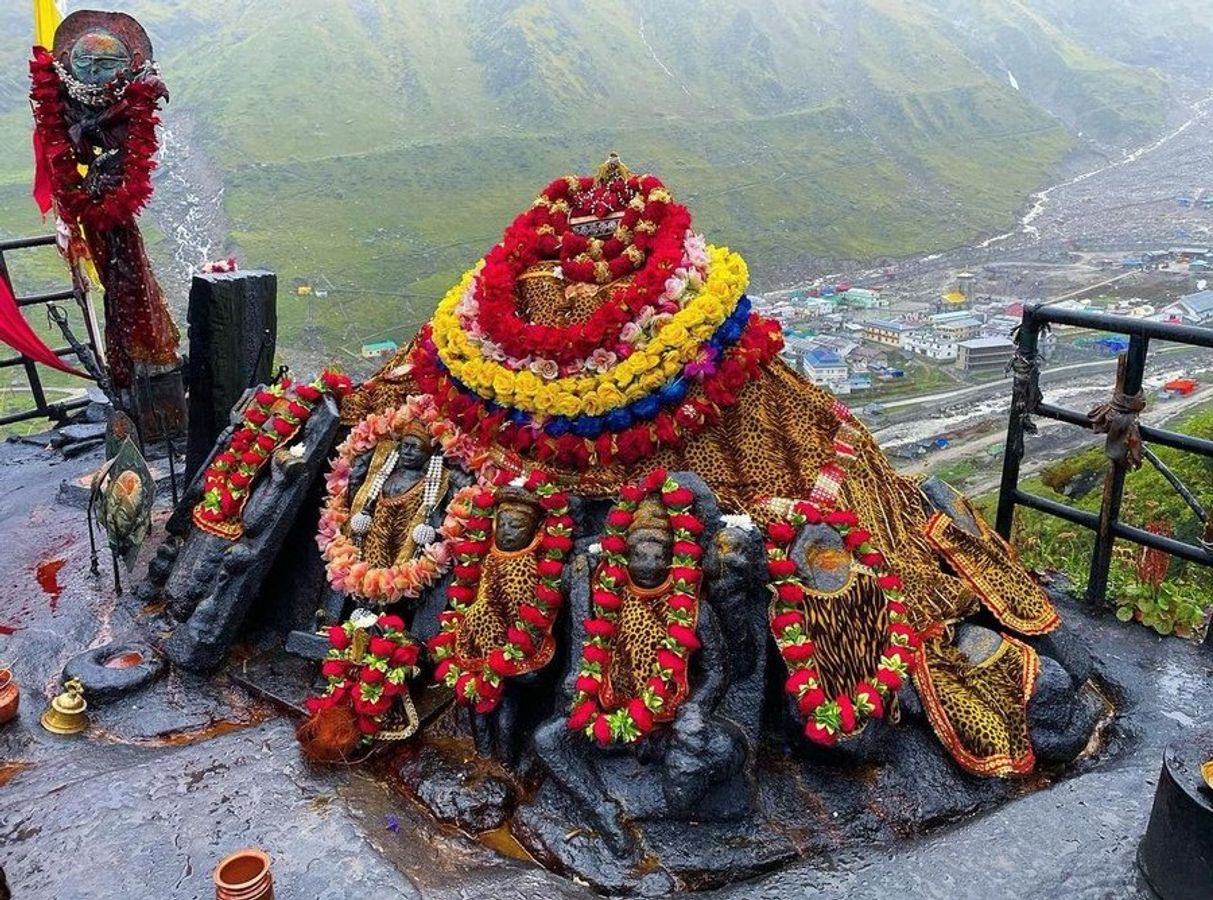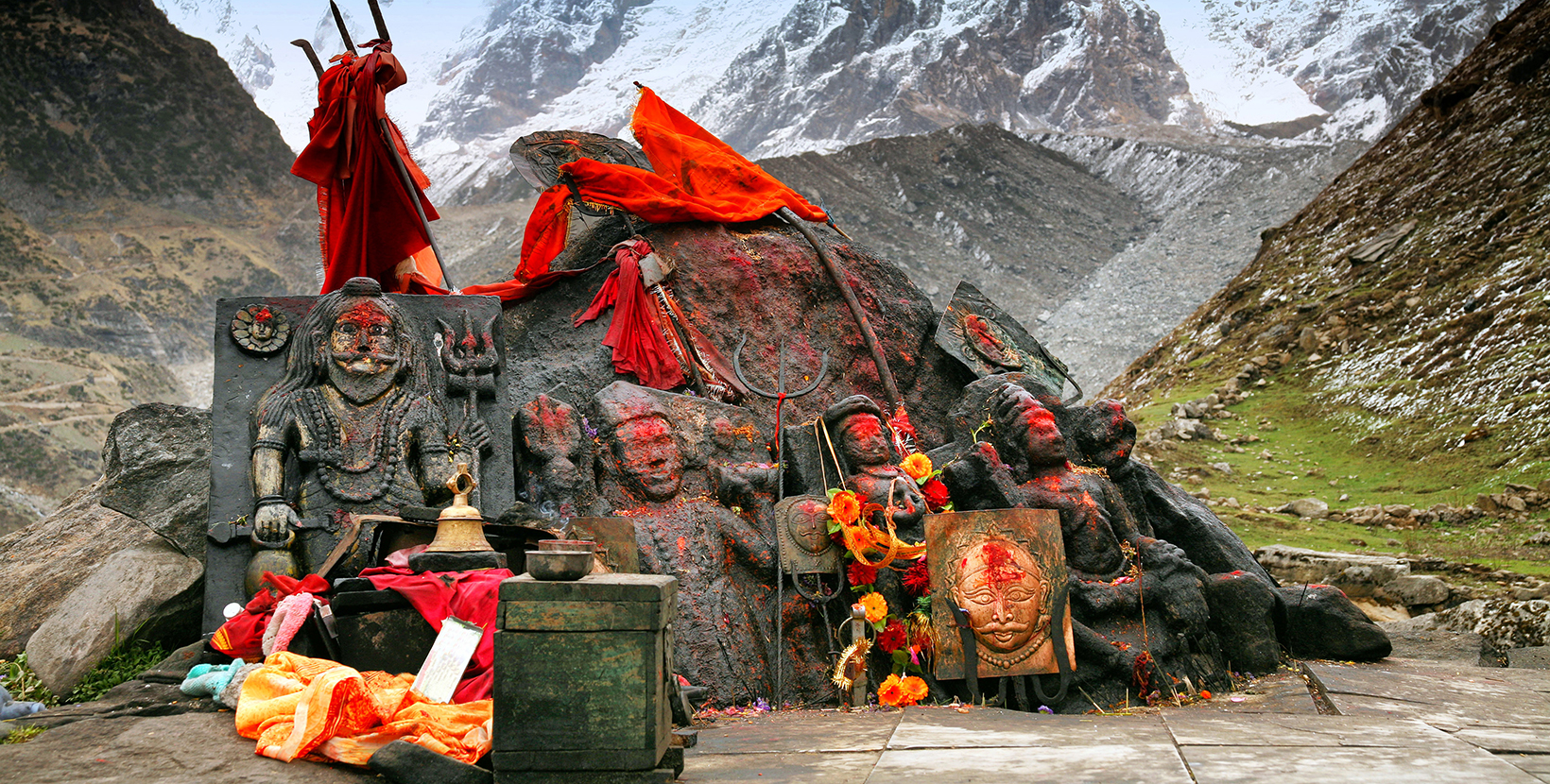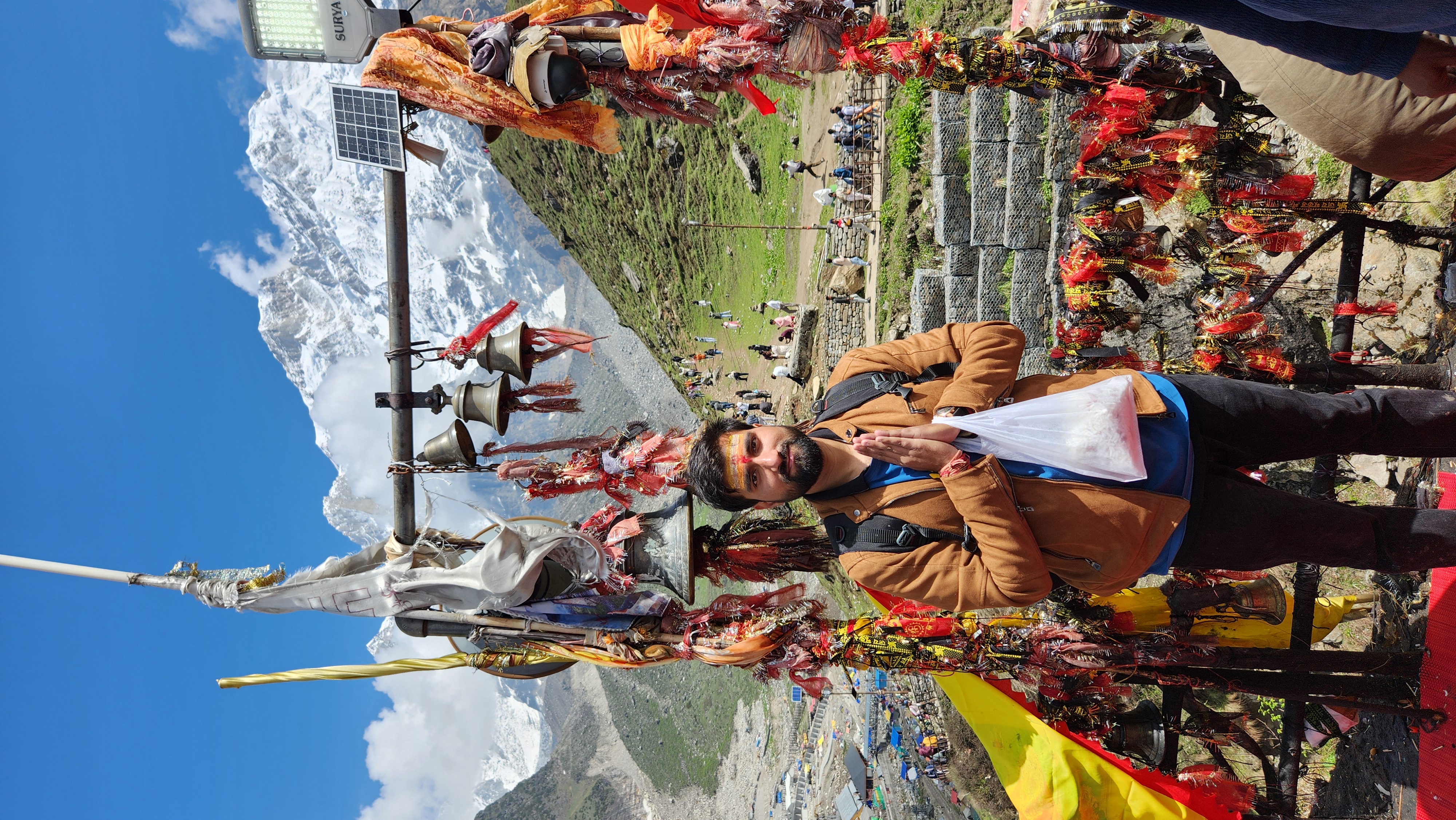Bhairavnath Mandir
Published on June 26, 2025
Nestled amidst the majestic Himalayan ranges in Uttarakhand, India, Bhairavnath Temple is an important spiritual site located near the world-famous Kedarnath Temple. This sacred shrine is dedicated to Lord Bhairava, a fierce manifestation of Lord Shiva. Often overshadowed by the main Kedarnath Temple, Bhairavnath Temple holds immense religious and mythological significance, especially in the spiritual geography of Kedarnath.
Who is Lord Bhairava?
Lord Bhairava is one of the most fearsome and powerful forms of Lord Shiva. Known as the protector and guardian of sacred places, Bhairava symbolises the destruction of evil, fearlessness, and righteous anger. He is often depicted riding a dog and carrying a trident (trishul) and a drum (damaru). Despite his fierce appearance, Bhairava is also seen as a compassionate protector of devotees and pilgrims.

Location and Setting
Bhairavnath Temple is situated about 500 meters uphill from the Kedarnath Temple. It sits on a hilltop, providing a stunning panoramic view of the Kedarnath Valley and the surrounding snow-capped peaks. The trek to the temple is relatively short but steep, and is considered spiritually uplifting due to the peaceful Himalayan ambience and the divine aura surrounding the path.
Historical and Mythological Significance
According to Hindu mythology, it is believed that Lord Bhairava was appointed by Lord Shiva himself to guard the Kedarnath Temple and the surrounding region. During the harsh winter months, when the main Kedarnath shrine remains closed due to heavy snowfall, it is said that Lord Bhairava protects the region and the Kedarnath Temple from evil forces and natural calamities.
This belief makes Bhairavnath Temple not just a subsidiary shrine, but an integral part of the Kedarnath pilgrimage circuit. Pilgrims often consider their Kedarnath yatra incomplete without visiting the Bhairavnath Temple.
Beliefs and Worship
Devotees believe that Bhairava is the protector of Kedarnath Dham and the entire region. Local lore says that when the Kedarnath Temple is closed in the winter and the priests and pilgrims leave the valley, Lord Bhairava stays behind to guard the land.
People pray to Lord Bhairava for courage, protection from evil, and to overcome fear. It is also believed that his blessings ensure safe passage for pilgrims during the arduous Kedarnath Yatra. Many people offer bells, red flowers, liquor, and mustard oil to Bhairavnath as part of their rituals.
Architecture and Surroundings
The temple structure is simple and modest compared to the grandeur of Kedarnath Temple, but it is spiritually significant. Built with local stone and traditional hill-style architecture, the sanctum sanctorum houses an idol of Lord Bhairava in his ferocious form.
The temple is surrounded by rugged mountain landscapes, alpine forests, and wide open skies. From the temple, you can get a bird’s-eye view of Kedarnath Valley and the Mandakini River. The surrounding silence, broken only by the sound of the wind and temple bells, adds to the mystical atmosphere.

Trek to Bhairavnath Temple
The short uphill trek from Kedarnath Temple to Bhairavnath Temple takes about 20–30 minutes. Though steep, the path is well-paved and manageable for most pilgrims. The trek is scenic and rewarding, with spiritual chants and breathtaking views motivating devotees along the way.
Those who visit in the early morning or during sunset get to witness the golden glow of the Himalayan peaks, which is a deeply divine experience.
Importance During Kedarnath Winter Closure
During winter, the Kedarnath Temple is closed, and the idol of Lord Shiva is moved to Ukhimath, a nearby town. However, Bhairavnath remains spiritually present in Kedarnath.
Locals and temple priests believe that no harm comes to the Kedarnath region in winter because Lord Bhairava watches over it. This unwavering belief has been supported by surprising events—despite being in an avalanche-prone area, Kedarnath Temple remains safe year after year.
Festivals and Celebrations
The main festival celebrated at Bhairavnath Temple is Bhairava Ashtami, which falls on the eighth day of the Krishna Paksha in the month of Kartik (usually in November). Devotees from nearby villages and pilgrims from across India visit the temple to offer prayers and perform special rituals.
On this day, a special puja is performed, and it is believed that Lord Bhairava bestows blessings of protection and removes obstacles from the lives of his devotees.
Spiritual Experience
Many spiritual seekers describe the visit to the Bhairavnath Temple as a soul-stirring experience. The combination of nature’s raw beauty, the spiritual energy of the place, and the peaceful solitude of the mountains makes it a perfect place for meditation and reflection.
Sitting in silence near the temple, one can feel a strong connection to the divine and the Himalayas, often referred to as “Dev Bhoomi” or the Land of the Gods.
Tips for Visitors
Here are some useful tips for those planning to visit the Bhairavnath Temple:
-
Trek Carefully: Wear good walking shoes, especially if you are visiting in the early morning or late evening when the path may be slippery.
-
Weather Ready: Carry warm clothes, as the temperature can drop quickly even in summer.
-
Don’t Skip It: Many people visit Kedarnath Temple and ignore Bhairavnath Temple. Make sure you take the time to visit—it’s an essential part of the pilgrimage.
-
Respect Local Beliefs: Maintain silence and follow local customs while visiting the temple. Avoid littering.
Summary
The Bhairavnath Temple in Kedarnath is not just an additional stop on the yatra route—it is the spiritual guardian of Kedarnath itself. With a strong mythological background, serene surroundings, and deep-rooted faith among pilgrims, this temple is an essential part of the Kedarnath spiritual journey.
Visiting this temple not only completes your pilgrimage but also strengthens your connection to the divine forces that protect and guide us. Whether you are a believer, a seeker, or a traveller exploring India’s sacred geography, the Bhairavnath Temple is a must-visit destination that offers spiritual solace and breathtaking natural beauty.
